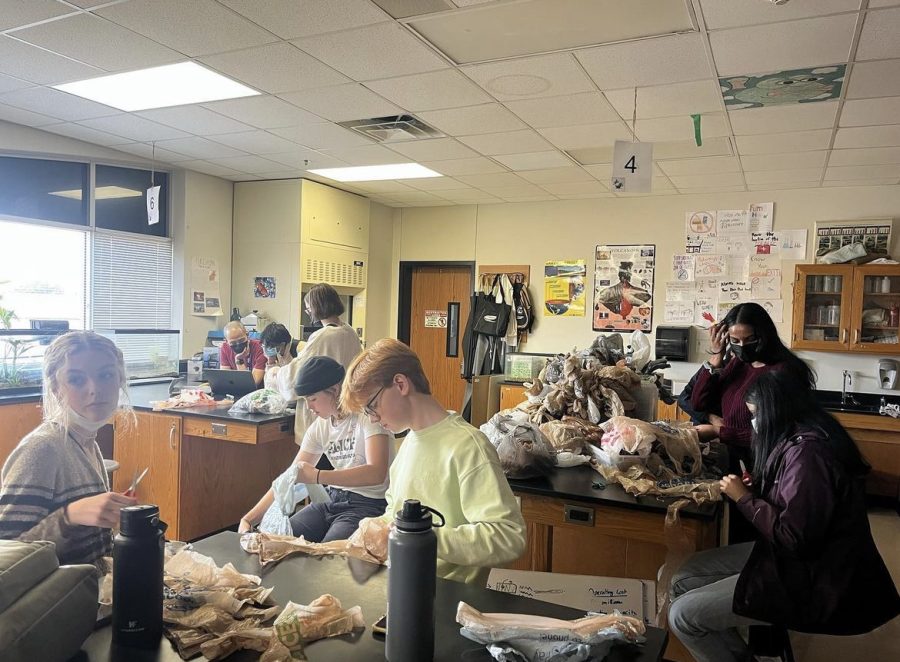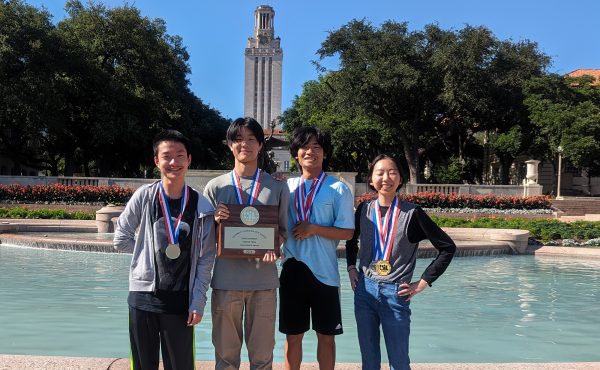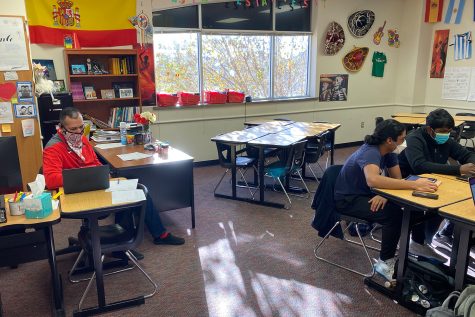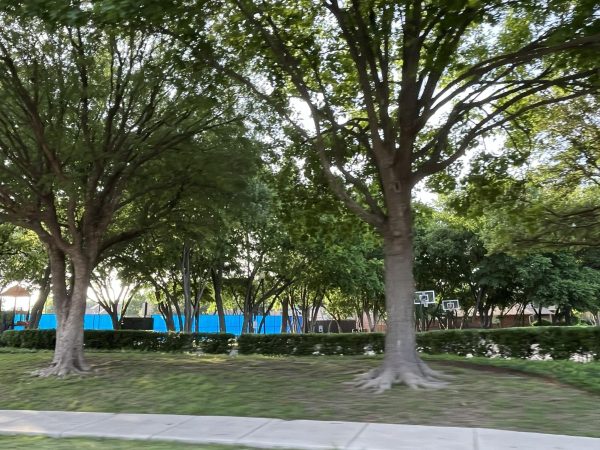SEA builds outside the box with eco-bricks project
photo via @stu4environment Instagram
Students for Environmental Action Club uses plastic bags to create mats which are then sent to animal shelters. “They’re mainly intended to be donated to shelters across Dallas because they’re versatile and extremely good at trapping heat in the cold months,” SEA Officer Srilasya Kamma said.
December 2, 2022
When most people think about types of building materials they might think about wood, steel, or concrete.
However the Students for Environmental Action Club (SEA) is building outside the box as they hope to make eco-bricks using a more unusual building material:
Plastic.
“Eco bricks are plastic bottles packed with more plastic,” SEA president Lauren Maher said. “These “bricks” are sturdy enough to be linked together in different ways and make structures.”
The club has been collecting plastic to make the eco-bricks and hopes to make enough to build a bench.
“Eco-bricks keep plastic out of waterways, landfills, and other nearby habitats,” senior Rose Lastovica said. “Many plastics can make their way to marine ecosystems from runoff, and this helps to eliminate and reuse plastic that could potentially go out into the environment.”
The project idea was first brought to the club by senior Aarya Oswal.
“I reached out to SEA because I truly thought this would be a great way for students to be actively involved with environmental sustainability,” Oswal said. “Since SEA already has an established club community, I thought the best way to bring eco-bricks to school was to initiate it in a part of the club.”
Oswal believes that eco-bricks are a good project to get people to think about how they can help the environment and their community.
“It’s a great way to get students to be active in trying to clean up our environment because it helps clear up pollution in a world where there definitely isn’t a lack of pollution,” Oswal said. “While students use non-recyclables from around the community, they get hands-on experience on how they can help their surrounding environment by creating objects that would be pieced together in creating something grand.”
While there are many upsides to making eco-bricks there are also a few downfalls. They can be time consuming and can’t be used if not made properly.
“A negative of eco-bricks is that they simply don’t have the ability to be as strong as other building materials so their application is limited,” Maher said. “But making them regardless gives a new use for the plastic which otherwise would end up polluting.”
Despite any negatives, Oswal believes that eco-bricks open up a number of opportunities.
“The numerous possibilities of what we can create with the Eco-bricks is what I am ecstatic about,” Oswal said. “We can create useful structures like benches or structures to admire such as statues, with the sky being the limit. I hope what we create with the eco-bricks will be a lasting structure that future generations of students will look upon and hopefully see the purpose behind this project.”













